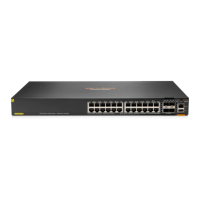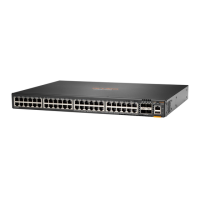224
Syntax
display cpu-usage history [ job job-id ] [ slot slot-number [ cpu cpu-number ] ]
Views
Any view
Predefined user roles
network-admin
network-operator
Parameters
job job-id: Specifies a process by its ID. The value range for job-id is 1 to 2147483647. If you do not
specify a process, this command displays the statistics for the entire system's CPU usage (the total
CPU usage of all processes). To view the IDs and names of the running processes, use the display
process command. For more information, see Network Management and Monitoring Configuration
Guide.
slot slot-number: Specifies an IRF member device by its member ID. If you specify a process but do
not specify a member device, this command displays the statistics for the process on the master
device. If you do not specify any options, this command displays the statistics for all processes on all
member devices.
cpu cpu-number: Specifies a CPU by its number. If you specify a process but do not specify a CPU,
this command displays the statistics for the default CPU. If you do not specify a process or CPU, this
command displays the historical statistics for all CPUs.
Usage guidelines
After CPU usage monitoring is enabled, the system regularly samples CPU usage and saves the
samples to the history record buffer. This command displays the most recent 60 samples in a
coordinate system as follows:
• The vertical axis represents the CPU usage. If a statistic is not a multiple of the usage step, it is
rounded up or down to the closest multiple of the usage step. For example, if the CPU usage
step is 5%, the statistic 53% is rounded up to 55%, and the statistic 52% is rounded down to
50%.
• The horizontal axis represents the time.
• Pound signs (#) indicate the CPU usage. The value on the vertical axis for the topmost pound
sign at a specific time represents the CPU usage at that time.
Examples
# Display the historical CPU usage statistics.
<Sysname> display cpu-usage history
100%|
95%|
90%|
85%|
80%|
75%|
70%|
65%|
60%|
55%|
50%|
45%|
40%|

